Concluding chapter one
First mission: drive to Ghana and store Ivy for rainy season ✔️
GHANA
People often ask about our longer-term route plan and schedule. While we’ve always had the broad aim to reach southern Africa and explore its many countries for a few years, we only focus on the finer details of this journey in stages. Chapter one was to get from Morocco to Ghana by May and leave Ivy there for rainy season, while we spent time in the UK/Europe. We’re delighted that the plan came together.
There are many things we do have to consider in advance – like seasons, visas and other paperwork, security situations, road conditions, work commitments, and family time. But having no time limit gives us the luxury of not having to rush south or think of every single detail too far ahead.
For us, it was enough of a deadline to cross nine (not entirely predictable) countries to reach Ghana by a pre-arranged date to catch our flight out. Past experiences have taught us that the best laid plans can decide to drive themselves off into the sunset at any moment. Some people might remember our Ecuador gearbox breakdown delaying us by nearly a year and creating havoc with plans we’d already made to meet my family in Chile. Cue plenty of stress, extra expense, and a 5,000km bus ride.
So, step by step it is.
When we crossed the border into Ghana early one morning in May, we punched the air. Made it! We headed straight for the beach. As we arrived, a man immediately spotted our Belgian licence plates and approached us, shouting ‘take me to Europe, take me to Europe, I want to go!’ This happens quite a lot, and yet again we reply light-heartedly that we’re driving away from Europe and not towards it. We don’t feel light about it though; it’s sad to hear these pleas so regularly. We wish we could be more encouraging but, really, what can we usefully say?
We spent a very sociable few days at a great spot under the palm trees. Irene and Jasper, a Dutch couple (@buitendebubbel) we’d already seen fleetingly in both Sierra Leone and Liberia, turned up unexpectedly and we finally had the chance to get acquainted. Also parked nearby were Ghanaians Paul and Mathias, who were living temporarily in an old Mercedes camper on the property. A couple of days later we were joined by Erik and Tanya, from Germany, (@rocket.on.tour) who are also heading south in an Iveco camper.
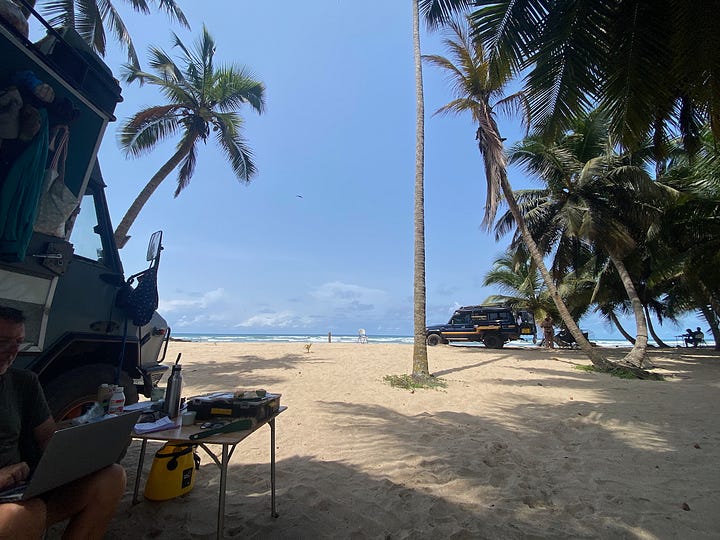

We were already getting into early prep mode for leaving Ivy behind for a few months. There was a lot of fixing, cleaning and sorting going on.
We made time to be tourists and joined Paul and Mathias on a trip to the nearby Nzulezo stilt village, on Lake Tadane. The village was established in the 15th century when people migrated from a part of the ancient Ghana empire (now in modern-day Mali) due to conflict, and chose a watery existence for safety.
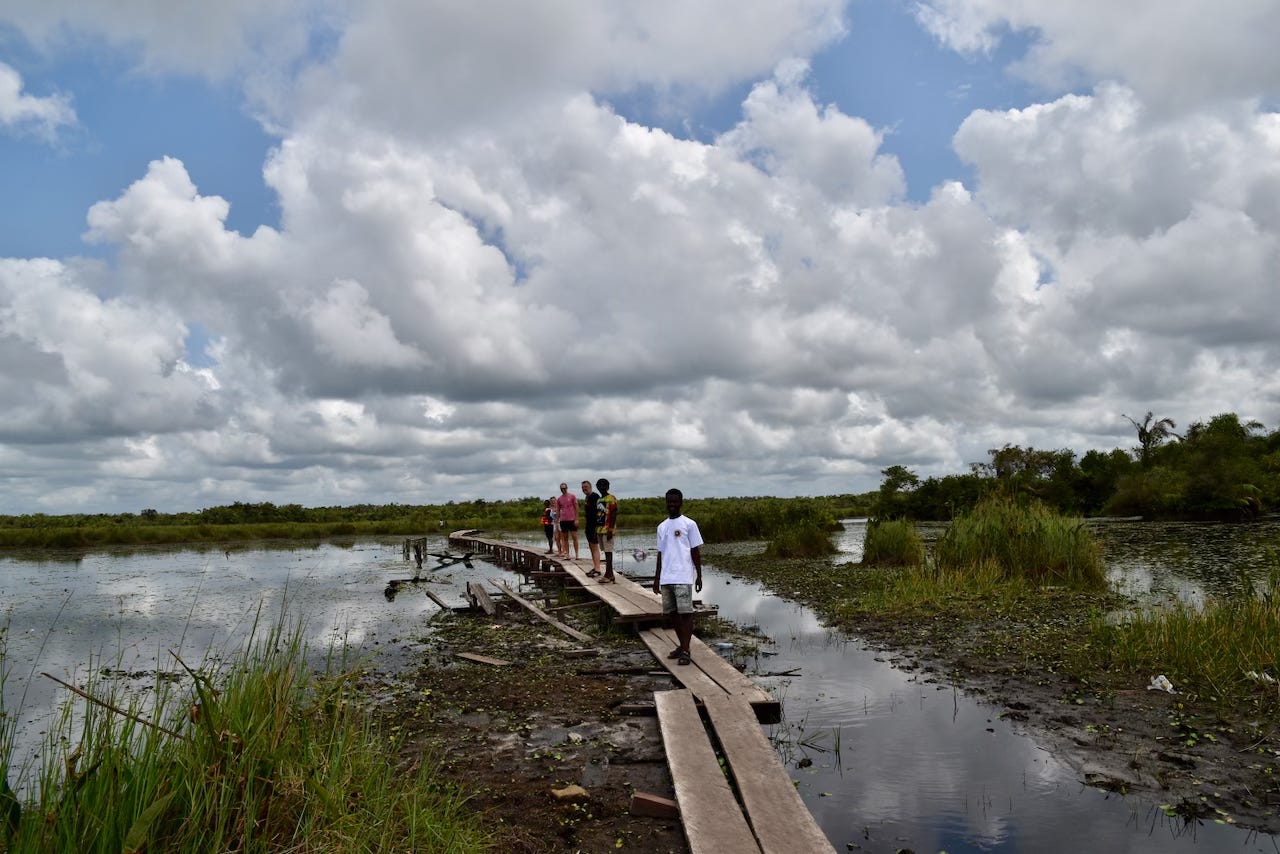

After a few nights, we dragged ourselves away from the sand and headed east along the coast in torrential rain.
Apart from its wonderful beaches, a big part of Ghana’s tourism centres around the history of the transatlantic slave trade. The coastline is peppered with old trading posts turned slave fortresses, which were variously established and run by competing European countries who enriched themselves off the backs of African people over hundreds of years.
We wandered round the outside of the closed Fort San Antonio, near Axim, dodging the terracotta puddles.
Driving further in the nasty weather wasn’t appealing so we decided to try to find a camp nearby. We’d seen a B&B on the map that looked like it had a big garden, so we showed up and asked. The security guard called the owner and he agreed to let us stay. We had this amazing place to ourselves for the night.
As many places do, they had cleaned up the beach around their property, but nearby there were huge piles of rubbish – probably a combination of stuff that had been washed up and dumped. The lack of waste management systems is a massive problem in the countries we’ve visited so far, and the volume of plastic everywhere is often eye-popping and disheartening.
We carried on along the coast and called in for a night to the little beach town of Busua, which was walking distance to the British colonial fortification Fort Metal Cross, in Dixcove, so named after the shape of the branding irons used on imprisoned slaves.
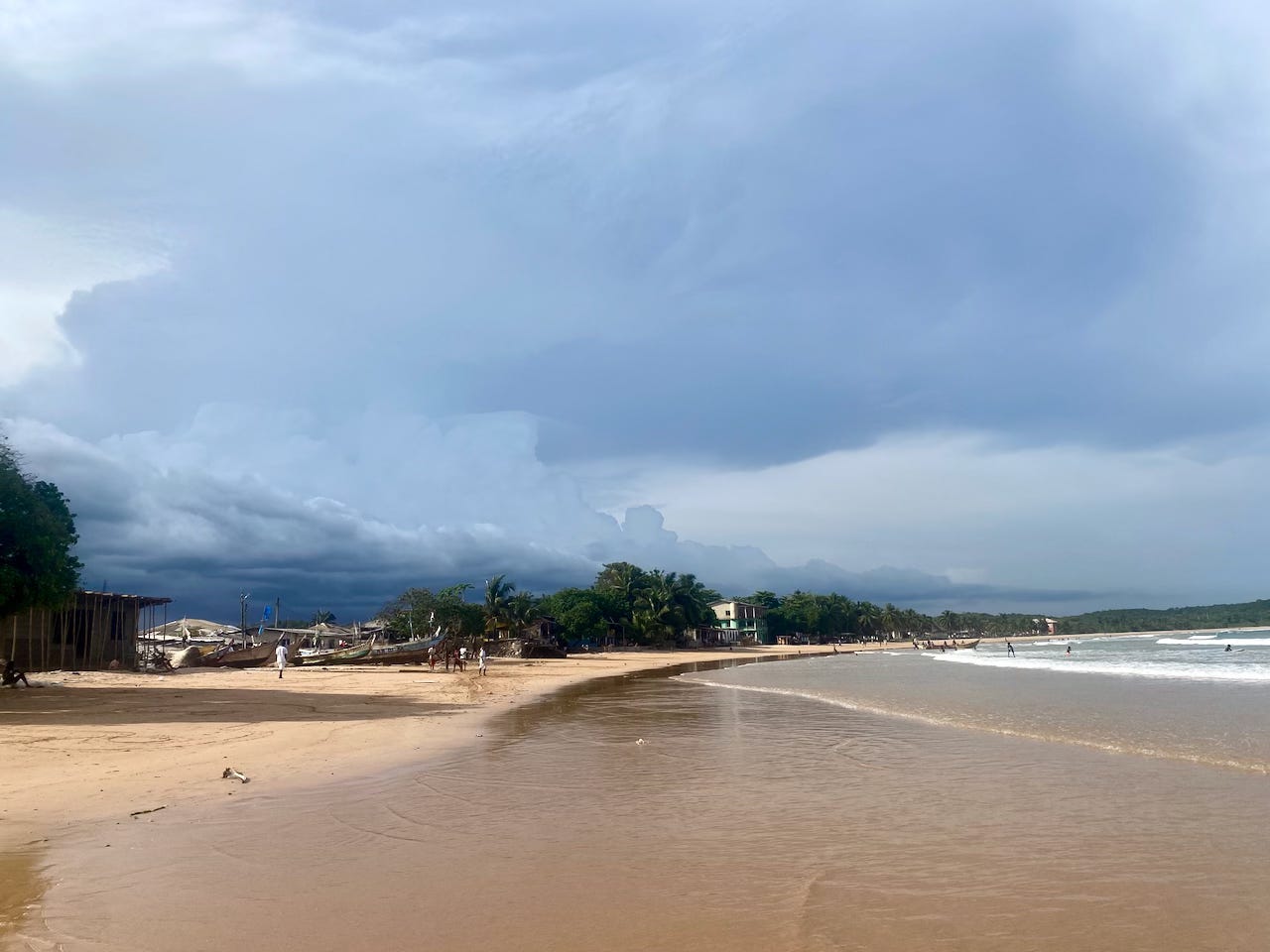
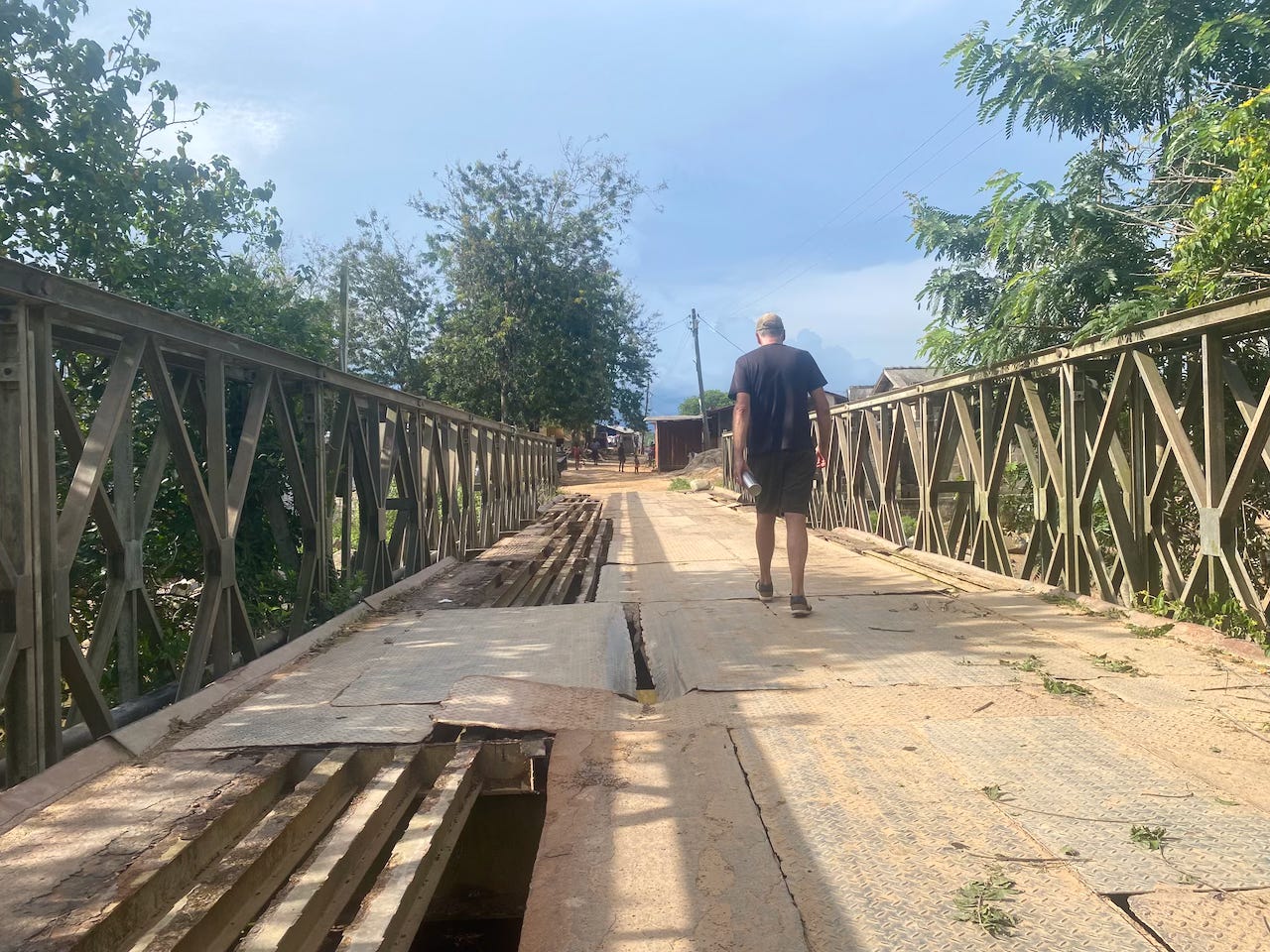
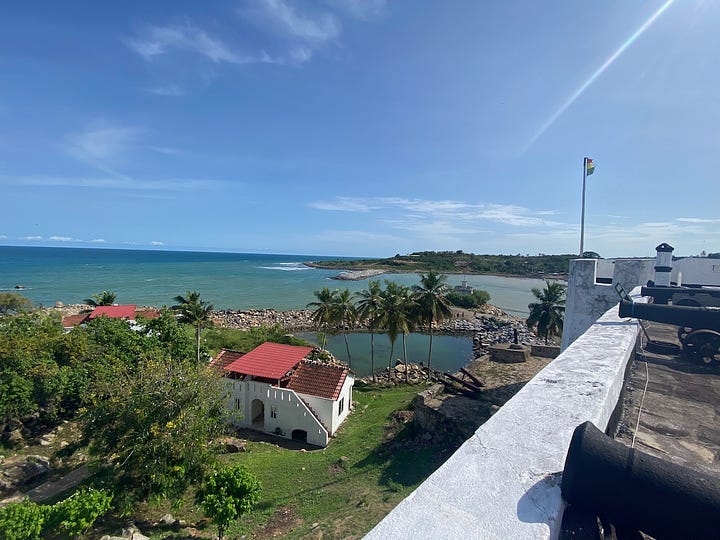
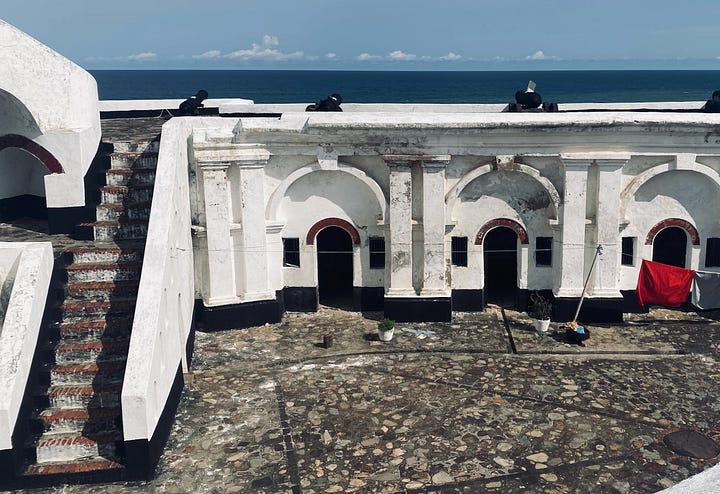


We took a slightly better route out of Busua but overall the driving conditions on Ghana’s coast were pretty miserable – mostly due to lots of traffic, roadworks and potholes on the main highway.
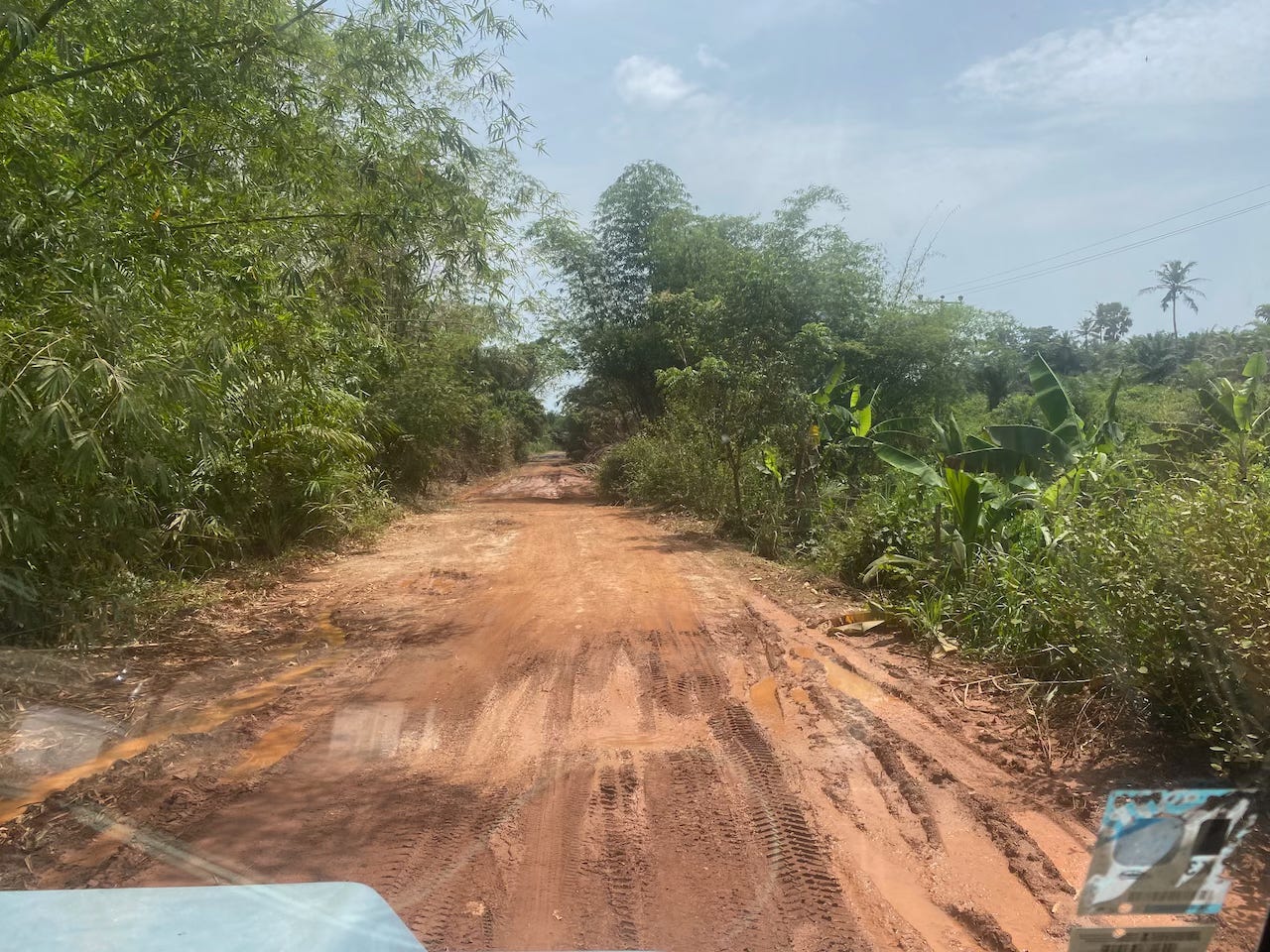
We’ve actually been to Ghana before – we were here in 2008 for the Africa Cup of Nations football tournament, and we visited the country’s most famous slave fort, Elmina Castle, then. We decided to return as it’s a fascinating and important part of this shameful period of history. Not to mention sobering. Millions of Africans were held captive and sold through the West African slave fortresses – an estimated two million died on the transatlantic voyage to the Americas, and many millions more perished in captivity. The dehumanising stories of abuse, violence, starvation and rape are hard to hear. I asked the guide at Elmina how difficult he found it to repeat these harrowing facts several times a day. He said: “I do have to steel myself.”
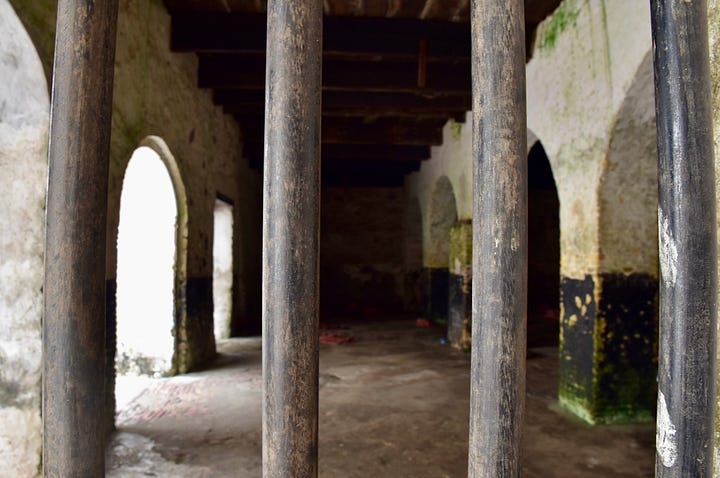
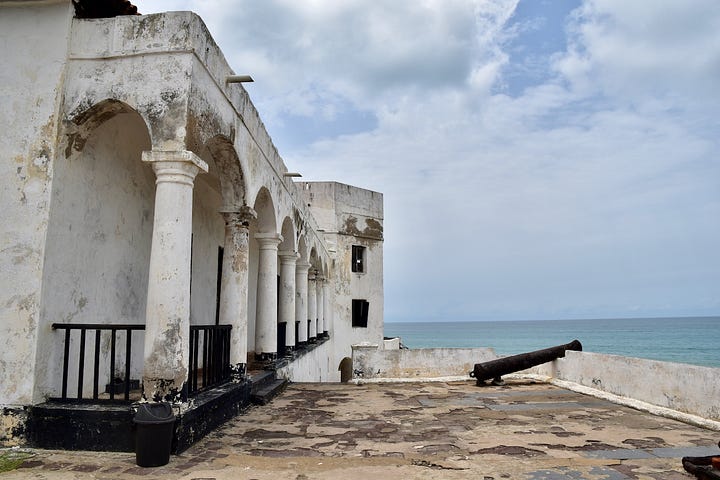
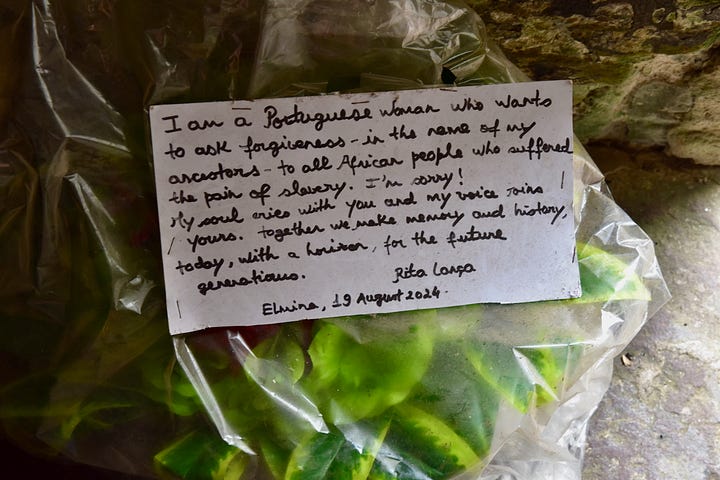
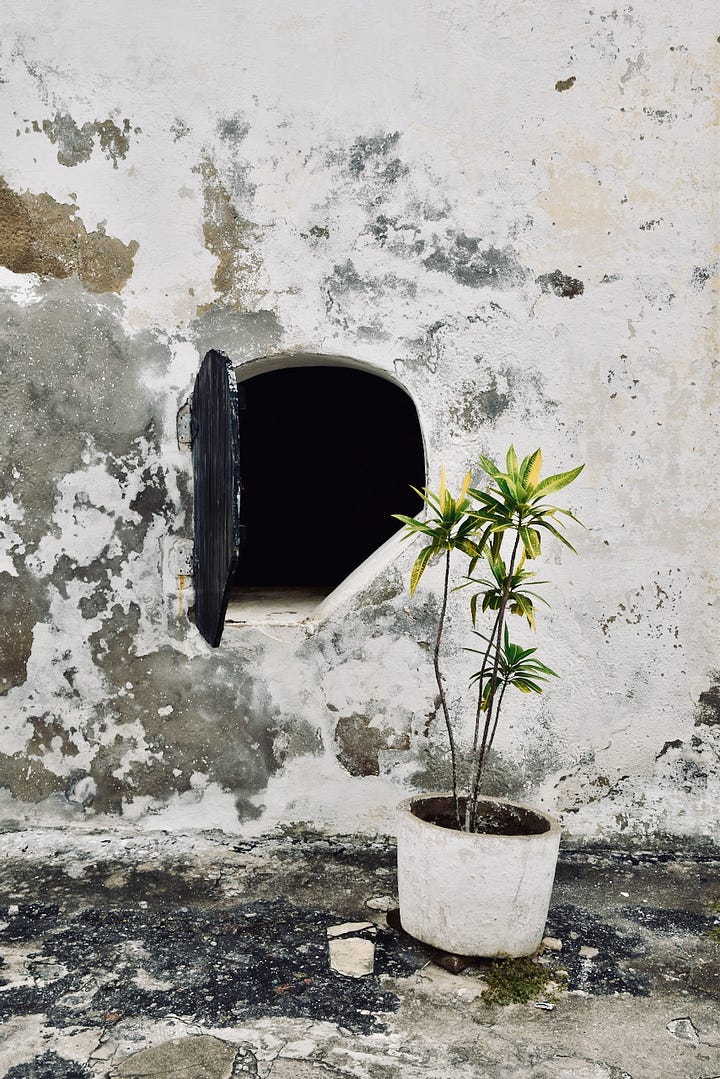
Built in 1482 by the Portuguese, initially to protect the gold trade, Elmina went on to become a key centre of the slave trade. It was later bombarded and taken over by the Dutch, before being sold to the British when they colonised the Gold Coast (Ghana’s former name) in 1872, which was after the official abolition of slavery.
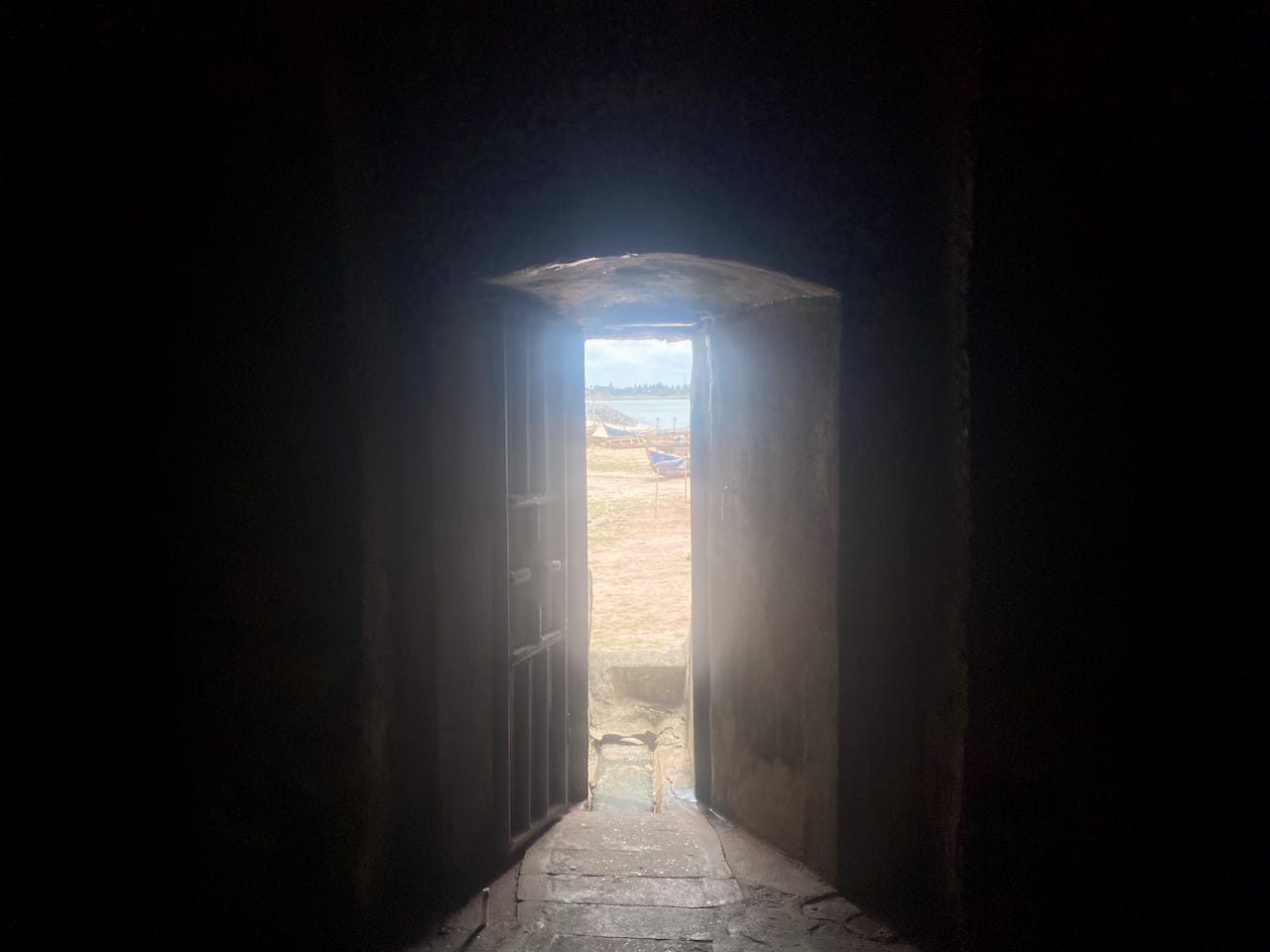
At Elmina we coincided again with Irene and Jasper, and had a ‘final’ get-together before saying our goodbyes – they were heading on to the next countries with some speed, so we wouldn’t be catching up again.
We carried on eastwards in the direction of the capital, Accra. We’d attempted to meet up properly with long-term Africa travellers Piritta and Niina, from Finland (@expeditionconservation) but had to settle for a chat at the roadside as we passed in opposite directions on the coastal highway.
We had a luxurious few nights at a beach resort, which began with a fascinating chat over beers with the owner, a Nigerian doctor who has worked in the UK for decades and divides his time between there and Ghana. Which explained why the place was called Solent Villas, named after a stretch of water in the south of England.
We had peace and space to do some work, have a rest, and continue the repairs and cleaning jobs.
Then it was on to the serious business. We’d made a long list of checks to have done on Ivy at a mechanic’s place in Accra – after nearly nine months of hard slog she needed some TLC, and we wanted to know if there were any parts we could usefully bring back from the UK/EU.
After a sweaty mosquito-filled night at another stop on the way, we gritted our teeth and braved the traffic into the city. It took two-and-a-half hours to drive 30km.
On the upside, we immediately had a good feeling about Bilal, the mechanic, who comes recommended by many overlanders. He went methodically through our list and actually communicated with us about it! Sounds obvious, eh? But we find that so many mechanics just do not listen, nor discuss, to our satisfaction. There was a lot of waiting around for a couple of days, and we had to spend a night sleeping in their yard. But nothing was more important than getting this completed thoroughly. We agreed what was needed, who would be sourcing the parts (where necessary) and made a list of jobs that would be done when we returned to Ghana after the summer.
Another upside was that, like many people in this region, Bilal and his business partner Samir are of Lebanese heritage. On day one they kindly brought us a delicious lunch while we waited, and on day two we walked to Samir’s restaurant for a giant slap-up Middle Eastern breakfast.
Everything had gone reassuringly well with Ivy’s health-check. Nothing dramatic was needed – some routine and mostly preventative stuff like replacing a couple of wheel bearings, fuel injector nozzles, a bushing here, a seal there and all the usual things like changing fluids and filters.
Bilal fell in love with her, but she’s very much spoken for.
Although we’d been staying reasonably watertight, Ivy still needed a jacket to protect her from five months of sitting in on-off rains and wind. We had a frustrating search for the right thing in a district of Accra where truckers go to get tarps. Eventually we had some pieces sewn together to fit.
We were hot, smelly and very keen to get out of the city. Finally we headed out and arrived at the final destination for this chapter of the trip, a great B&B in the hills outside Accra. It’s common for long-term overlanders to take breaks (for seasonal reasons or otherwise) and go home to see family and do life admin. It’s not always easy to find storage options, but this place offers parking spots for just that purpose, with the massive bonus of also having the space, water and facilities to do all the jobs necessary for leaving a vehicle behind for several months.
It’s hard to believe just how much there is to do for such a tiny house. Nine months of red dust, sand, fluff and dead insects filled every crevice of the truck and caked our belongings, the fabrics, the floor. Everything was taken out and scrubbed. Mice and rats commonly move in to dormant campervans, so not one speck of food can be left behind. Taking a pause is like hitting the refresh button, and long-ignored repairs suddenly must be done. The whole place had to be purged again, to ensure we took stuff home that wasn’t being used. Endless lists were made of things we needed to buy and bring back to Ghana. It took five days to get through it all.
We weren’t the only ones ploughing through the lists. Amado and Jax (@Nullacruising) were going through the same process and we came together most evenings to relax and compare notes. Irene and Jasper also diverted and showed up unexpectedly for a final, final farewell! (but we failed to get a photo).
The last two days were horrendous. I picked an amazing time to come down with my first proper bout of food poisoning. On our penultimate day I couldn’t even get out of bed. I lay sweating and fretting about The Lists and wondering how I’d get through an overnight journey to London, while Jeremy ran about doing double the workload.
The following day I could at least stand on my legs and function, in between sprints to the toilet. We hauled Ivy’s jacket on, pinned it down, shoved our sweat-soaked clothes into the bags, showered, and headed to the airport. Physically I felt like shit, but we were excited to have everything finished and to be looking forward to seeing everyone at home. We also felt weird about closing this intense episode of our travels and switching our mindsets to a completely different mode. It’s odd sometimes, this nomad life.
Au revoir Ivy, see you again soonish for chapter two.
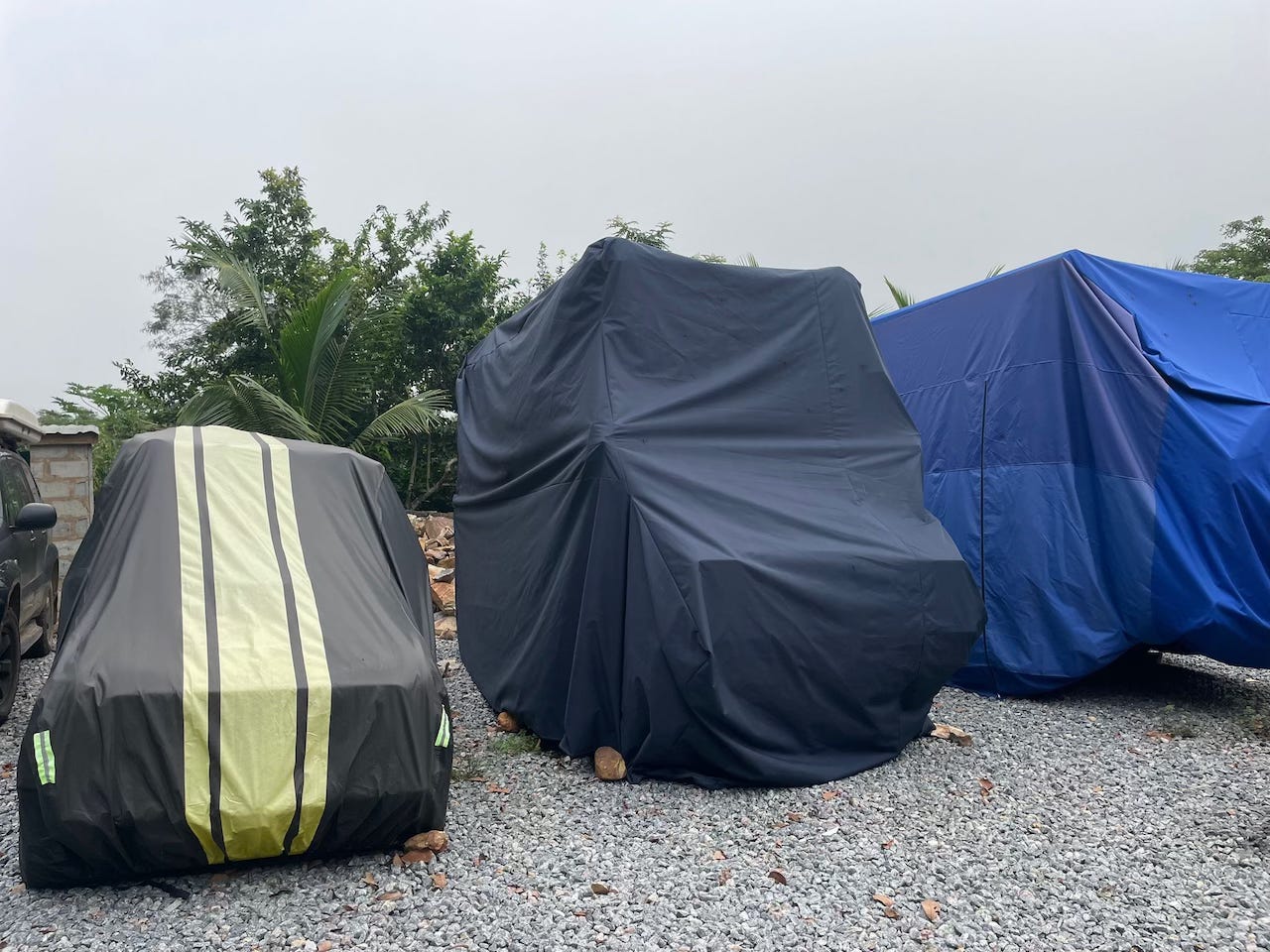






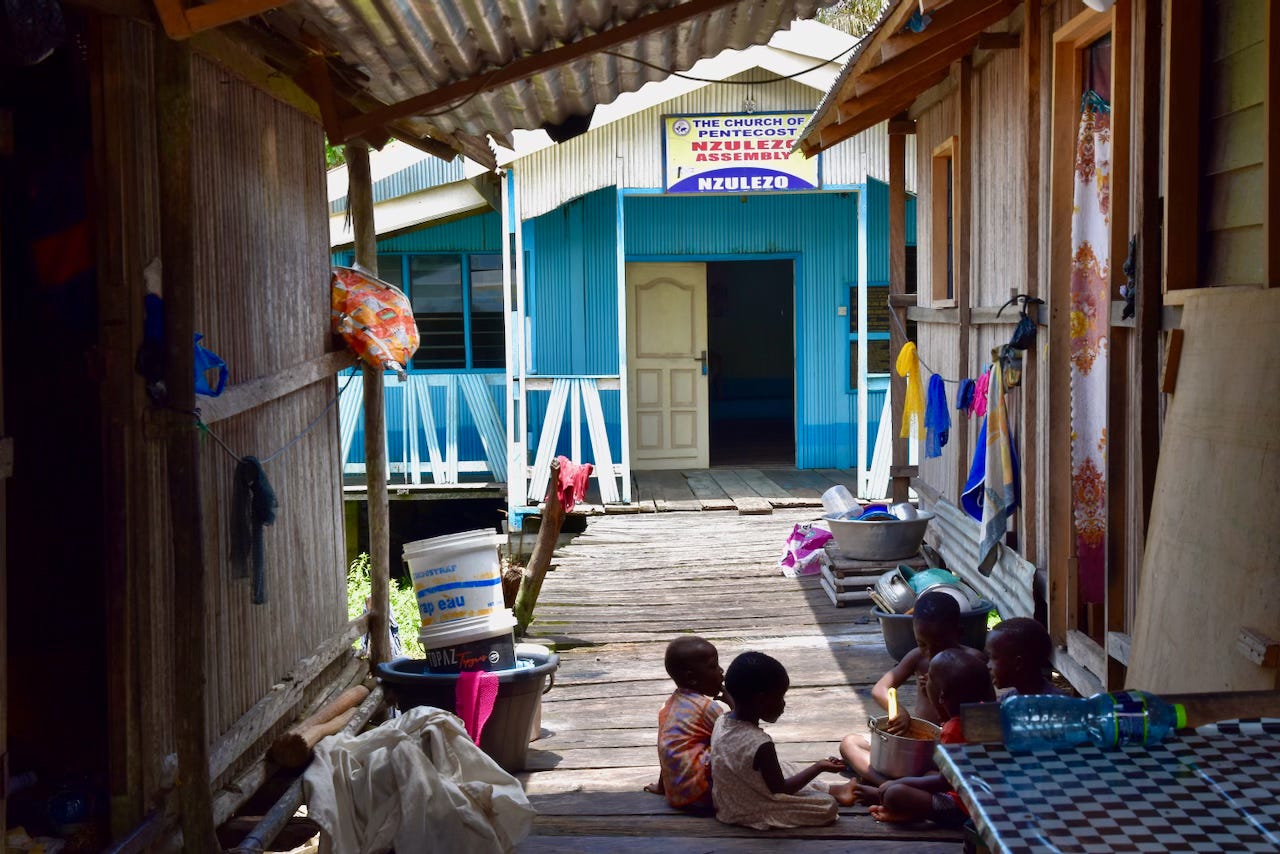
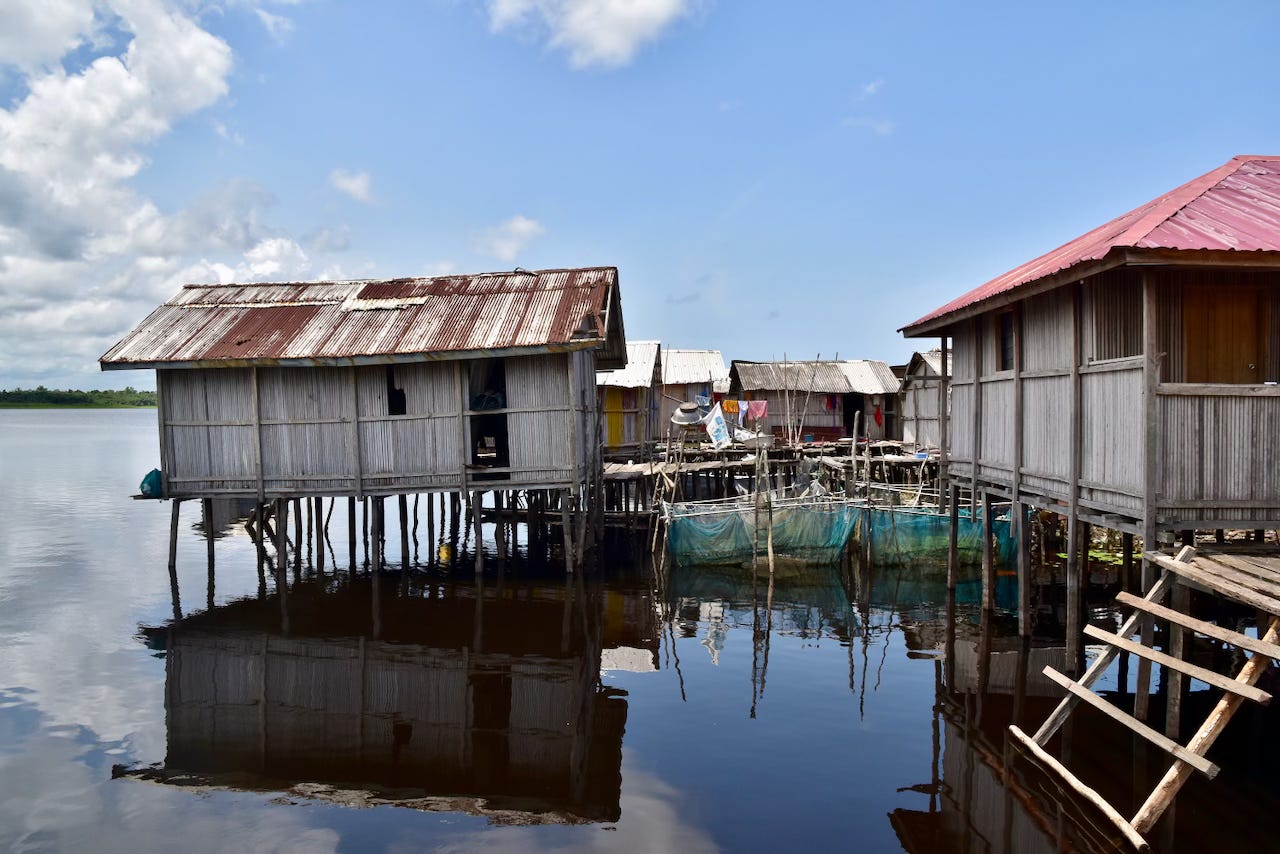


























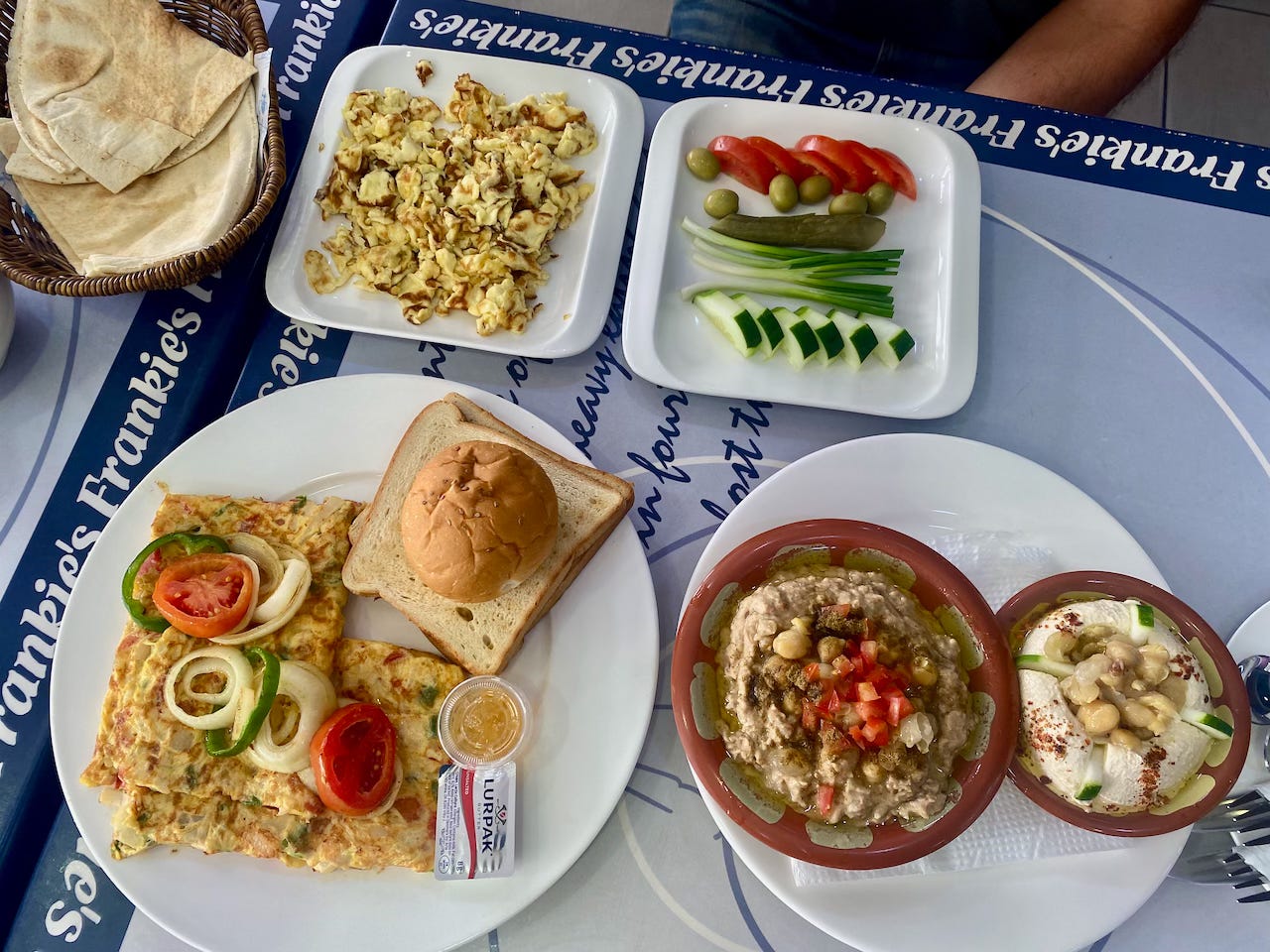




What an end to a chapter! So many great pictures as well Paula, really loving seeing your incredible journey!
Absolutely incredible, what you are doing! Loving reading it all. I am hopeful that we’ll reconnect one day!